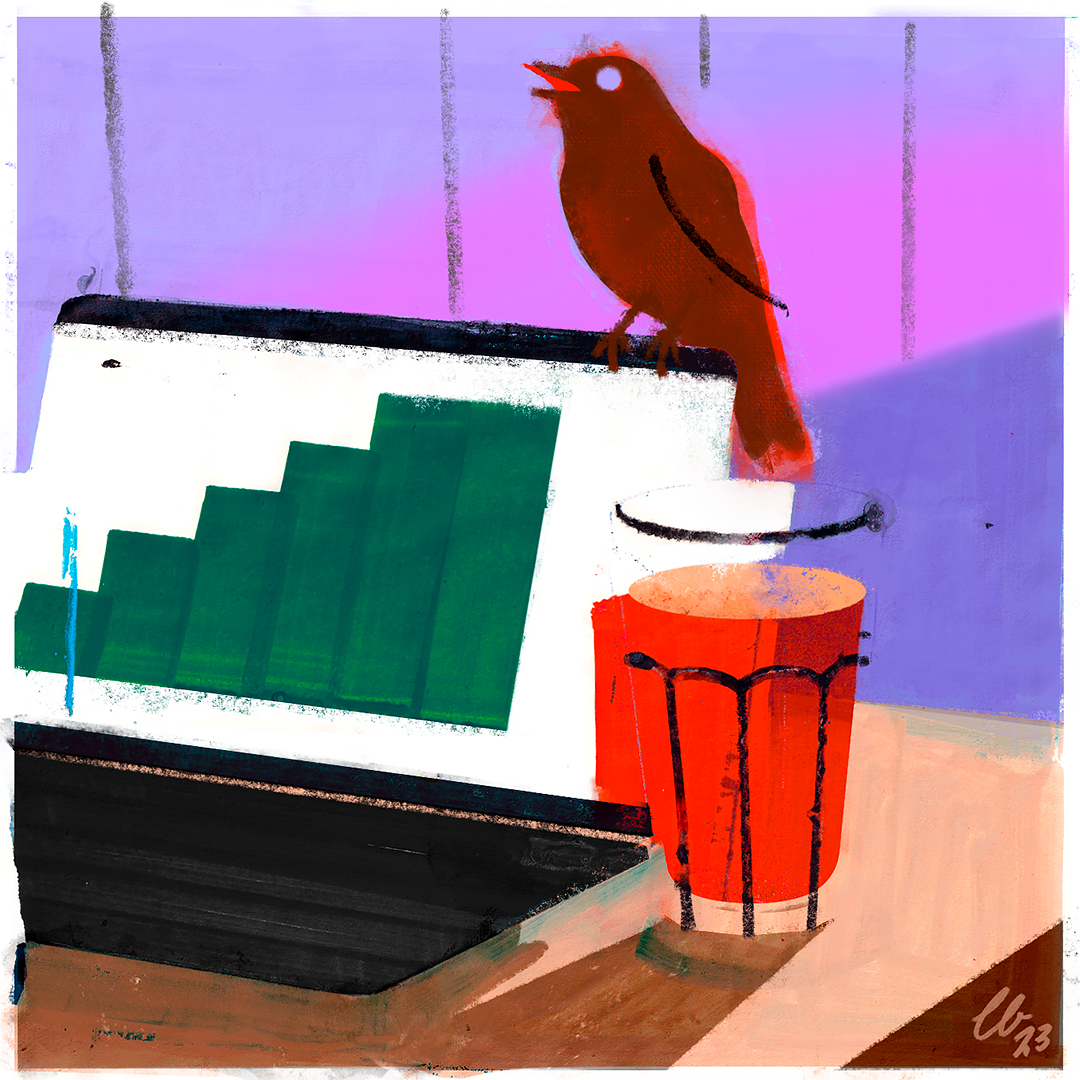
Illustrations by Leonie Bos
In the heart of London stands 22 Bishopsgate, a gleaming example of the healthy workplace of the future.
The 62-storey glass-fronted development, opened in December 2020, is owned by AXA IM. It is the epitome of a smart building, monitoring the occupants’ ecosystem while giving them access to health food bars and meditation areas. These features have helped the city’s second largest tower (after The Shard), achieve the highest accreditation from BREEAM, WiredScore, and WELL.
This degree of certification, along with the ethos of the building, was partly responsible for attracting its current crop of tenants. These including US law firms Cooley, Covington & Burling and Skadden, as well as insurance companies Hiscox and Beazley.
“We have attracted organisations looking for office space to evolve,” says Ed Riby, director and head of soft landings at JLL, which manages tenancy at 22 Bishopsgate. “It is important to have a building [with] the latest accreditation such as WELL certification.” Riby adds that each occupier can further enhance the wellbeing in their workplace by developing their own initiatives and WELL certification too.
Sustainable offices
The method and approach at 22 Bishopsgate helped the team at RICS to develop the International Building Operation Standard (IBOS), which was launched in February 2022. IBOS provides a framework to consistently measure the performance of buildings, and certifications like WELL (administered by the International WELL Building Institute) is what that looks like in practice.
All are part of navigating how the modern occupier now uses the office. In October 2020, an RICS paper, The Age of Unreal Estate, looked at the role of real estate in the 21st century and stated: “The growing awareness of sustainability … and rapidly evolving attitudes to health and wellbeing as part of a wider set of social changes, and the overall impact on real estate has been profound.”
That was just six months into the pandemic, when no one knew quite how profoundly COVID-19 would change the way people use buildings, particularly in the commercial and corporate world.
User experience of real estate
Developers, employers, and occupants focus on the user experience and what the building can offer, says Nicola Forest AssocRICS, sustainability manager at ISG. “We spend approximately 90% of our time indoors. That means we need to be thinking about the quality of buildings and their impact on people’s wellbeing.”
On top of this is the ‘call-out’ culture of Generation Z, the age demographic of many new, young employees. It puts a real focus on companies’ social and environmental responsibility, which has become a leading factor for talent acquisition and retention, says Rhiannon Laurie, a sustainable design strategist at Gensler who is WELL AP certified.
“The transition and change of real estate, from being about the financial return for the investor to having the user focus as the priority, has absolutely happened now,” says Paul Bagust, head of property standards at RICS.
"It’s the biggest shift we’ve seen in the past few years and certainly is very welcome that [the building] is being looked at differently in terms of what it does, and its purpose. Yes, it’s still a financial asset, but it’s much more about the user experience, and how the building supports that.”
This has amplified the need for building standards and certification – occupiers want to know what they’re getting.
Choosing the right certification
There are more than 100 sustainable building certifications, such as LEED and the aforementioned BREEAM. For those with a heavy focus on health and wellbeing of building occupants, WELL is the most widely recognised in the industry.
“What people want is the ability to benchmark, to be able to measure consistently,” says Bagust. “From the perspective of the investor, user or owner, you want to know how the building is performing. If you’re not measuring any of that information consistently, then you are not going to be able to make an informed decision.”

“We need to be thinking about the quality of buildings and their impact on people’s wellbeing” Nicola Forest AssocRICS, ISG
Launched in 2014, WELL has lots of evidence-based features which can be implemented at the design or operational phases of a building. “It enables developers to offer something different for everybody – you can individually tailor to the occupants,” says Colin Ball, lighting director at architect firm BDP. As of today, its adoption spans 125 countries and almost 5bn ft2 of real estate space.
“There are five pillars within IBOS guidelines, including health and wellbeing, where WELL is one of several options [for certification],” says Richard Le Sueur, director, EMEA at the International WELL Building Institute.
Bagust says IBOS is a standard that should be measured within a building and integrated into a property strategy: “It is about helping an organisation ask better questions of itself and its professional advisors. WELL is a part of a solution they may want to implement.”
As office use evolves, so too must the standards and certifications. “Rome wasn’t built in a day and the WELL movement didn’t happen overnight,” says Le Sueur. “We’ve spent years working to advance human health and wellbeing through science. We’ve channelled all we have learned into an adaptable and equitable rating system, which continues to be anchored by the latest scientific research and industry best practices.”
A new kid on the block like IBOS, should “evolve constantly because the industry is changing so rapidly,” says Bagust, particularly in relation to market conditions. “It’s economically very difficult, so organisations are looking at their buildings and asking, ‘is this building performing as well as we want it to?’ And the answer would be ‘well, how do you want it to perform?’ What are you measuring to understand the performance?”

“From the perspective of the investor, user or owner, you want to know how the building is performing” Paul Bagust, RICS
International Building Operation Standard
The International Building Operation Standard (IBOS) is a data-based approach that supports the measurement and management of buildings for strategic decision-making.
It was developed alongside the market and goes beyond traditional ways of assessing building performance to add another dimension – user experience. This provides a consistent way to benchmark across a number of properties.
IBOS revolves around five key pillars: compliance, economics, functionality, sustainability and performance. By assessing against these pillars, buildings can be measured in a consistent way. What pillar does your building perform best on? What can you do to raise the status of your weakest pillar?
Assessment results can be used to inform decisions around ESG and sustainability, building optimisation and user-experience. The framework can be integrated into your own system, or you can use the RICS IBOS self-assessment tool.

